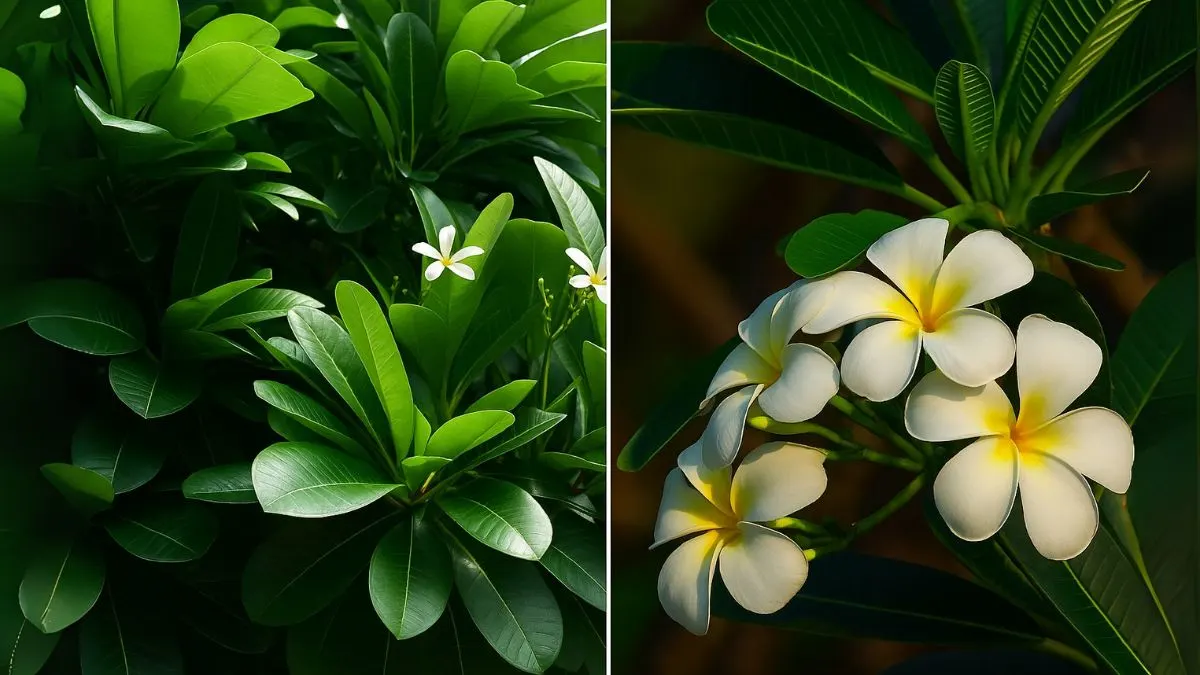If you’ve ever visited a temple in India, you’ve likely noticed the fragrant white and yellow flowers placed at the feet of deities. These are Plumeria flowers, commonly known as “frangipani.” To many, they’re not just blooms but a bridge between the material and spiritual worlds. Revered for their fragrance and resilience, Plumeria are more than ornamental—they symbolise purity, beauty, and devotion.
But why do these flowers hold such sacred significance? And what lies behind their use in rituals across India and beyond? Let’s dive deeper.
Plumeria in Hindu Worship

- Flowers of the Gods: In India, Plumeria flowers are used for deity worship among Hindus, especially in South Indian temples. They are often offered to Lord Vishnu, Shiva, and Ganesha. The gentle fragrance is said to calm the mind, while the pure white petals represent sincerity and faith.
- Symbol of Dedication: It is widely believed that plumeria is traditionally considered as a variety of the champak flower, a bloom deeply tied to devotion. In many households, plumeria garlands adorn home altars, creating a divine atmosphere during daily prayers.
👉 From my personal experience, visiting a temple in Tamil Nadu felt incomplete without the subtle yet powerful presence of plumeria offerings.
Symbolism in Eastern Religions
Beyond Hinduism, Plumeria are symbols of immortality in Eastern religions like Buddhism and Jainism. The plant’s ability to produce fresh flowers even after being uprooted inspired the belief in eternal life and the cycle of rebirth.
- In Bali and Thailand: Plumeria is worn in the hair during ceremonies.
- In Hawaii: It symbolizes positivity, renewal, and is gifted as a sign of affection.
Clearly, it is said to symbolize dedication and devotion to the divine no matter the culture.
Also Read: The Madhu Kamini Plant Is Your Garden’s Best-Kept Secret
Plumeria in Religious Ceremonies
Plumeria is often associated with religious ceremonies not just in India but across Asia and the Pacific Islands. The flowers are used in weddings, temple rituals, and even funerals—highlighting their versatility in marking both joyful beginnings and spiritual farewells.
In Ayurvedic practices, plumeria’s soothing aroma is thought to reduce stress and restore inner peace, making it a flower that heals both spiritually and emotionally.
Spiritual and Cultural Uses of Plumeria
Region/Culture |
Spiritual Meaning |
Common Use |
India (Hinduism) |
Symbolizing purity, beauty, and devotion |
Deity offerings, garlands, temple use |
Buddhism |
Immortality and rebirth |
Temple ceremonies, meditation spaces |
Hawaii |
Renewal and affection |
Floral leis and gifts |
Thailand/Bali |
Dedication and celebration |
Hair adornments, rituals |
Jainism |
Cycle of rebirth |
Religious symbolism |
Plumeria as a Plant of Resilience
Apart from spirituality, Plumeria is admired for its toughness. Even when branches are cut, they sprout new life, reinforcing their connection with immortality. This resilience explains why cultures across the globe consider them divine.
Quick Growing Facts:
- Thrives in tropical and subtropical climates.
- Requires bright sunlight and well-drained soil.
- Blooms from spring to autumn, offering continuous fragrance.
Also Read: Sarpagandha Plant Benefits & Risks
Why It Still Matters Today
Plumeria continues to charm people in modern homes and gardens in Canada, the USA, and across the world. Whether grown in pots on balconies or in temple courtyards, their presence connects daily life with deeper spiritual roots. For those seeking mindfulness in gardening, planting a plumeria becomes an act of devotion in itself. You nurture not just a flower but a symbol of purity, immortality, and divine dedication.
If you’re considering adding plumeria to your garden, remember: it’s not just a plant, it’s a piece of spiritual heritage.
👉 Plant one today, and let its blossoms remind you daily of dedication, devotion, and the eternal beauty of the divine.






